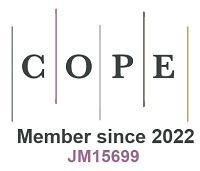REFERENCES
1. De Luna P, Hahn C, Higgins D, Jaffer SA, Jaramillo TF, Sargent EH. What would it take for renewably powered electrosynthesis to displace petrochemical processes? Science. 2019;364:eaav3506.
2. Pham THM, Zhang J, Li M, et al. Enhanced electrocatalytic CO2 reduction to C2+ products by adjusting the local reaction environment with polymer binders. Adv Energy Mater. 2022;12:2103663.
3. Zhang J, Luo W, Züttel A. Crossover of liquid products from electrochemical CO2 reduction through gas diffusion electrode and anion exchange membrane. J Catal. 2020;385:140-5.
4. Zhang J, Luo W, Züttel A. Self-supported copper-based gas diffusion electrodes for CO2 electrochemical reduction. J Mater Chem A. 2019;7:26285-92.
5. Koolen CD, Luo W, Züttel A. From single crystal to single atom catalysts: structural factors influencing the performance of metal catalysts for CO2 electroreduction. ACS Catal. 2023;13:948-73.
6. Koolen CD, Oveisi E, Zhang J, et al. Low-temperature non-equilibrium synthesis of anisotropic multimetallic nanosurface alloys for electrochemical CO2 reduction. Nat Synth. 2024;3:47-57.
7. Zhang J, Pham THM, Ko Y, et al. Tandem effect of Ag@C@Cu catalysts enhances ethanol selectivity for electrochemical CO2 reduction in flow reactors. Cell Rep Phys Sci. 2022;3:100949.
8. Zhang J, My Pham TH, Gao Z, et al. Electrochemical CO2 reduction over copper phthalocyanine derived catalysts with enhanced selectivity for multicarbon products. ACS Catal. 2023;13:9326-35.
9. Gao Y, Xiao H, Ma X, et al. Cooperative adsorption of interfacial Ga-N dual-site in GaOOH@N-doped carbon nanotubes for enhanced electrocatalytic reduction of carbon dioxide. J Colloid Interface Sci. 2024;654:339-47.
10. Zhong D, Zhao ZJ, Zhao Q, et al. Coupling of Cu(100) and (110) facets promotes carbon dioxide conversion to hydrocarbons and alcohols. Angew Chem Int Ed Engl. 2021;60:4879-85.
11. Yang PP, Zhang XL, Gao FY, et al. Protecting copper oxidation state via intermediate confinement for selective CO2 electroreduction to C2+ fuels. J Am Chem Soc. 2020;142:6400-8.
12. Tang C, Shi J, Bai X, et al. CO2 reduction on copper’s twin boundary. ACS Catal. 2020;10:2026-32.
13. Zhang T, Bui JC, Li Z, Bell AT, Weber AZ, Wu J. Highly selective and productive reduction of carbon dioxide to multicarbon products via in situ CO management using segmented tandem electrodes. Nat Catal. 2022;5:202-11.
14. García de Arquer FP, Dinh CT, Ozden A, et al. CO2 electrolysis to multicarbon products at activities greater than 1 A cm-2. Science. 2020;367:661-6.
15. Zhou F, Zhang J, Zhang Y, Wu Y, Wang Y, Luo W. Palladium-copper bimetallic catalysts for electroreduction of CO2 and nitrogenous species. Coord Chem Rev. 2024;509:215802.
16. Morales-guio CG, Cave ER, Nitopi SA, et al. Improved CO2 reduction activity towards C2+ alcohols on a tandem gold on copper electrocatalyst. Nat Catal. 2018;1:764-71.
17. Ren D, Gao J, Pan L, et al. Atomic layer deposition of ZnO on CuO enables selective and efficient electroreduction of carbon dioxide to liquid fuels. Angew Chem. 2019;131:15178-82.
18. Hori Y, Murata A, Takahashi R. Formation of hydrocarbons in the electrochemical reduction of carbon dioxide at a copper electrode in aqueous solution. J Chem Soc Faraday Trans 1. 1989;85:2309-26.
19. Xu C, Vasileff A, Jin B, et al. Graphene-encapsulated nickel-copper bimetallic nanoparticle catalysts for electrochemical reduction of CO2 to CO. Chem Commun. 2020;56:11275-8.
20. Yan Y, Zhao Z, Zhao J, Tang W, Huang W, Lee J. Atomic-thin hexagonal CuCo nanocrystals with d-band tuning for CO2 reduction. J Mater Chem A. 2021;9:7496-502.
21. Bernal M, Bagger A, Scholten F, et al. CO2 electroreduction on copper-cobalt nanoparticles: size and composition effect. Nano Energy. 2018;53:27-36.
22. Luo W, Xie W, Mutschler R, et al. Selective and stable electroreduction of CO2 to CO at the copper/indium interface. ACS Catal. 2018;8:6571-81.
23. Li M, My Pham TH, Ko Y, et al. Support-dependent Cu–In bimetallic catalysts for tailoring the activity of reverse water gas shift reaction. ACS Sustain Chem Eng. 2022;10:1524-35.
24. Li M, Luo W, Züttel A. Near ambient-pressure X-ray photoelectron spectroscopy study of CO2 activation and hydrogenation on indium/copper surface. J Catal. 2021;395:315-24.
25. Raciti D, Cao L, Livi KJT, et al. Low-overpotential electroreduction of carbon monoxide using copper nanowires. ACS Catal. 2017;7:4467-72.
26. Wang Y, Raciti D, Wang C. High-flux CO reduction enabled by three-dimensional nanostructured copper electrodes. ACS Catal. 2018;8:5657-63.
27. Grote J, Zeradjanin AR, Cherevko S, et al. Screening of material libraries for electrochemical CO2 reduction catalysts - Improving selectivity of Cu by mixing with Co. J Catal. 2016;343:248-56.
28. Luo W, Zhang Q, Zhang J, Moioli E, Zhao K, Züttel A. Electrochemical reconstruction of ZnO for selective reduction of CO2 to CO. Appl Catal B Environ. 2020;273:119060.
29. Zhao Y, Chang X, Malkani AS, et al. Speciation of Cu surfaces during the electrochemical CO reduction reaction. J Am Chem Soc. 2020;142:9735-43.
30. Jiang S, Klingan K, Pasquini C, Dau H. New aspects of operando Raman spectroscopy applied to electrochemical CO2 reduction on Cu foams. J Chem Phys. 2019;150:041718.
31. Deng Y, Handoko AD, Du Y, Xi S, Yeo BS. In Situ Raman spectroscopy of copper and copper oxide surfaces during electrochemical oxygen evolution reaction: identification of CuIII oxides as catalytically active species. ACS Catal. 2016;6:2473-81.
32. Moradzaman M, Mul G. In Situ Raman study of potential-dependent surface adsorbed carbonate, CO, OH, and C species on Cu electrodes during electrochemical reduction of CO2. ChemElectroChem. 2021;8:1478-85.
33. Liu C, Gong J, Li J, et al. Preanodized Cu surface for selective CO2 electroreduction to C1 or C2+ products. ACS Appl Mater Interfaces. 2022;14:20953-61.
34. Li YC, Wang Z, Yuan T, et al. Binding site diversity promotes CO2 electroreduction to ethanol. J Am Chem Soc. 2019;141:8584-91.
35. Lei Q, Huang L, Yin J, et al. Structural evolution and strain generation of derived-Cu catalysts during CO2 electroreduction. Nat Commun. 2022;13:4857.
36. Wang C, Kong Y, Soldemo M, et al. Stabilization of Cu2O through site-selective formation of a Co1Cu hybrid single-atom catalyst. Chem Mater. 2022;34:2313-20.
37. Chou TC, Chang CC, Yu HL, et al. Controlling the oxidation state of the Cu electrode and reaction intermediates for electrochemical CO2 reduction to ethylene. J Am Chem Soc. 2020;142:2857-67.
38. Lee SY, Jung H, Kim NK, Oh HS, Min BK, Hwang YJ. Mixed copper states in anodized Cu electrocatalyst for stable and selective ethylene production from CO2 reduction. J Am Chem Soc. 2018;140:8681-9.
39. Lei Q, Zhu H, Song K, et al. Investigating the origin of enhanced C2+ selectivity in oxide-/hydroxide-derived copper electrodes during CO2 electroreduction. J Am Chem Soc. 2020;142:4213-22.
40. Zhang XY, Lou ZX, Chen J, et al. Direct OC-CHO coupling towards highly C2+ products selective electroreduction over stable
41. Li J, Xu A, Li F, et al. Enhanced multi-carbon alcohol electroproduction from CO via modulated hydrogen adsorption. Nat Commun. 2020;11:3685.
42. Li J, Wang Z, Mccallum C, et al. Constraining CO coverage on copper promotes high-efficiency ethylene electroproduction. Nat Catal. 2019;2:1124-31.
43. Kim B, Tan YC, Ryu Y, et al. Trace-level cobalt dopants enhance CO2 electroreduction and ethylene formation on copper. ACS Energy Lett. 2023;8:3356-64.
44. Luo Y, Yang J, Qin J, et al. Cobalt phthalocyanine promoted copper catalysts toward enhanced electro reduction of CO2 to C2: synergistic catalysis or tandem catalysis? J Energy Chem. 2024;92:499-507.
45. Jiang T, Qin X, Ye K, et al. An interactive study of catalyst and mechanism for electrochemical CO2 reduction to formate on Pd surfaces. Appl Catal B Environ. 2023;334:122815.








